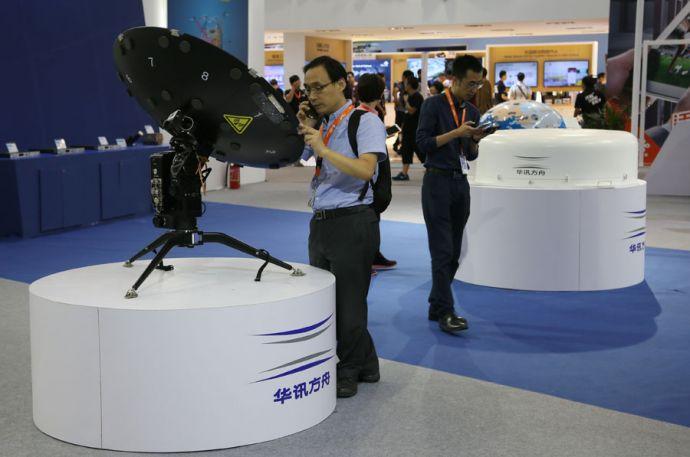
BEIJING -- Shenzhen, Guangdong-based China Communication Technology Co Ltd or CCT, a satellite-based communication services provider, will beef up its overseas presence to exploit opportunities brought by the Belt and Road, or B&R, Initiative.
CCT is currently offering services and products in the United States, Europe, the Middle East and nine other countries and regions that are participating in the B&R Initiative.
Last year, its overseas revenue was around 9 billion yuan ($1.4 billion), or over 60 percent of the total.
It plans to further explore Southeast Asian markets including Indonesia, Malaysia and the Philippines, and promote its products in East Asian economies such as Kazakhstan.
"We'll also extend our business to Africa this year and will tap into one or two Belt and Road economies each year," said Wu Guangsheng, president of CCT.
In January, the company entered the Philippines by acquiring G Telecoms Inc, the third-biggest telecom operator in the local market.
"It marks a milestone on the way to our globalization. We are changing our profile from a 'seller' to an 'operator' in the overseas markets. This change is significant not only to us but also to the country," said Wu.
Agreed Yao Chuanbin, the company's board secretary and investment director. "The Belt and Road Initiative has brought us great opportunities and we will push forward with our strategy in coordination with the national plan."
Wu said, "In the past, we could cooperate only with local (telecom) carriers in foreign countries by selling our equipment to them. The big step now means we can operate independently, be it launching our own satellites or providing data-related services."
Some 75 percent of the Philippines' 100 million population are aged 25 years or under, and have a voracious demand for communication services.
CCT has received a number of orders from civil aviation and public security departments in the Philippines, Indonesia and Malaysia, according to media reports.
"Infrastructure in some Belt and Road economies is underdeveloped, which provides huge space for our development. We could make use of our expertise to help them leap from traditional ground communication to the next higher level satellite-enabled communications," Yao said.
CCT's overseas forays will also benefit China, he said. "As an increasing number of Chinese enterprises go global, they need communication services to keep contact with their office at home and that's where we can offer help."
In Pakistan's Gwadar Port, for example, smooth communication could be hard to achieve due to weak infrastructure there. The problem could be solved if the area is covered with a satellite network.
Compared with ground-based communication, satellite communication has fewer limitations and can be applied in wider scenarios, such as in deserts, on high seas or in planes.
Satellite-based communication technologies are being used in a wide range of fields, including rescues, emergencies, border security, maritime services and smart cities.
According to a report by consulting organization Hexa Research, the world's mobile-focused satellite communication services market is expected to reach $5.53 billion by 2024 as demand for infrastructure or systems to send and receive information freely increases.
Applications of satellite communications in disaster management are projected to boost the market in the coming years, the Hexa report said.
North America was the largest consumer for satellite communication providers in 2016, taking up more than 30 percent of the world's total due to extensive usage of the technology.
The Asia-Pacific region is forecast to show a significant growth with growing use of satellite devices in defense, government and transportation applications, it said. (Source: China Daily)




 A single purchase
A single purchase









